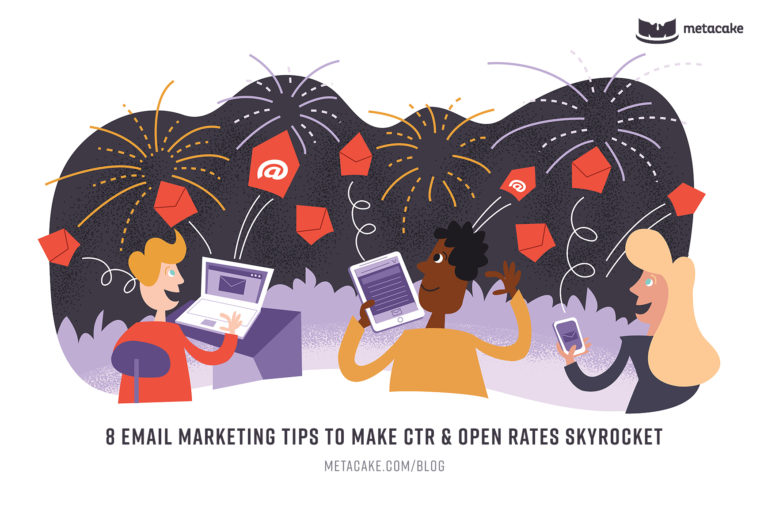In our work with brands of all sizes, without a doubt, email marketing (when done right) is by far the highest ROI marketing activity for any ecommerce brand. And as a nice benefit, it’s way more future proof than any other channel, because you control it and aren’t susceptible to algorithm changes (SEO, Facebook, Google Ads) and platform adoption. It’s as future proof as you can get in the marketing world.
Don’t believe us?
Some experts say email is 40 times more effective at acquiring new customers than Facebook or Twitter.
Now, if you want to see this kind of engagement in your email channel, the emails you send and the strategies you use need to be highly thoughtful and provide extreme value for your customers.
If you’re just sending emails based on your mood, or letting an inexperienced marketer manage your list communication, you will not see results and you will lose your audience.
Today we’ll dive into our top 8 ecommerce email tips to help you generate engagement with your content, namely: increase your open rates and CTRs (click-through-rates).
Disclaimer: Your email content, your product and your offer have to be amazing. We talk about that in other posts, but if those aren’t in line you need to start there!
Best Practices to Increase Open and Click-Through Rates
1. Draw them in with GREAT 🙌🏻 subject lines and headlines
You would think this would be simple, but it’s harder to get right than you’d think. Work on writing subject lines that are interesting enough to pique interest, without being too over the top. You NEED to draw the appropriate attention 🕺🏼. Remember, you’re competing with hundreds of other emails. There are entire books on how to write copy, but if you do nothing else, grab attention (but don’t fail to deliver on that). Dramatic, sensational, or just plain false subject lines will be ignored or marked as spam. We strongly recommend using an email platform like Klaivyo, which allows you to A/B test your subject lines to a portion of your audience before it sends to the entire list. We always test a safe subject line, an over-the-top subject line, and one in the middle.
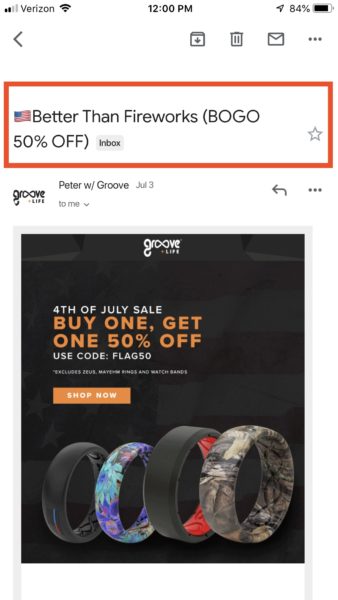
2. Deliver value
Every email you send needs to have a single and sole purpose, which is the same every time: deliver massive value. If your email doesn’t pass this test then don’t send it. Value doesn’t mean you should always be selling either. Think outside the box about how to build relationships. You can send tips for using your products, tell more about your company story or hint at new arrivals coming soon. But whatever you write, make it a goal to over-deliver value in every email. People are quick to unsubscribe these days, so give them a reason to stick around.
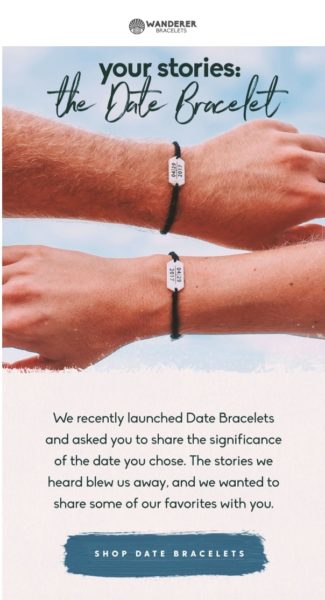
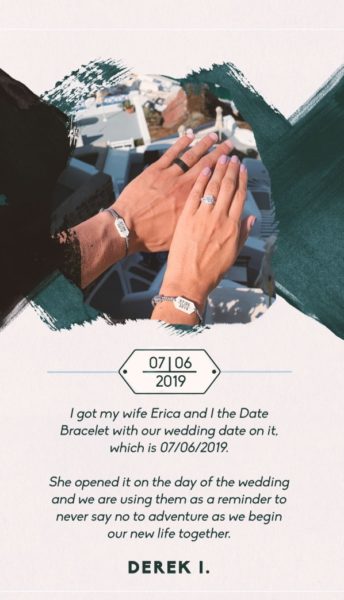
3. Concise copy
No one has time to read a novel when they’re checking their email at a stoplight. People are also intimidated by large blocks of text (the brain actually equates that with larger effort), so be scannable. It’s good to include text in your emails, but format the text so it’s scannable (no big blocks of text) and readable (appropriate font size). We find that limiting each “block of copy” to 1-2 sentences greatly improves readability, and you can send them to your site to read more.
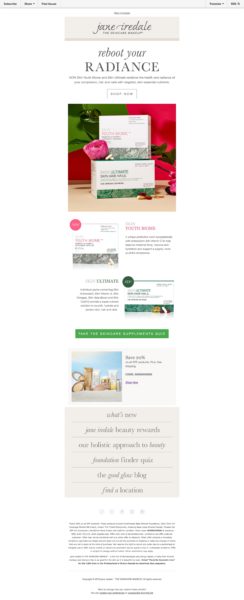
4. Effective images
You’ve probably seen the trend among brands experimenting with text-only emails, writing and formatting as if the founder or an employee actually wrote the email personally. This can be effective in doses, but if you’re looking for a strong click-through rate, images and graphics will still be the most eye-catching. Again, it all depends on your audience and the thing you are communicating. The key, of course, is using great design. Additionally, don’t put critical information in the image. Anything critical to the email should be in text in case images don’t load properly.
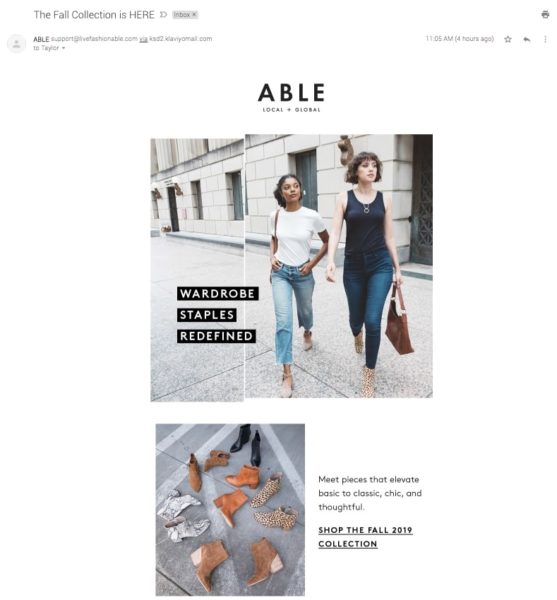
5. Mobile friendly
This should be a no-brainer in 2019, but when we (the marketers) work on computers all day, it’s easy to forget. Always send a preview of the email to your phone to check how it appears on mobile. You’ll want to pay attention to your own statistics on where your customers read your emails, but a good rule of thumb is to always optimize for mobile, since people are most likely to check their inbox on their phone. If you’re looking for a good service for testing your emails prior to send, check out Litmus.
6. Make it personal
Whenever possible, utilize audience segmentation to make your emails as relevant as possible for the recipients. You will see much higher engagement this way.
Using a platform built for ecommerce such as Klaviyo makes it simple to create segments of customers based on a variety of behaviors and attributes— from how they interact with your emails to what products they’ve purchased from you. A few ways we love to use segmentation:
- Win back customers who have not purchased in over 6 months
- Thank customers with multiple purchases and ask for a product review
- Exclude purchasers in the last 48 hours when sending reminders about current promotions
- Suggest relevant products to customers based on their recent purchase
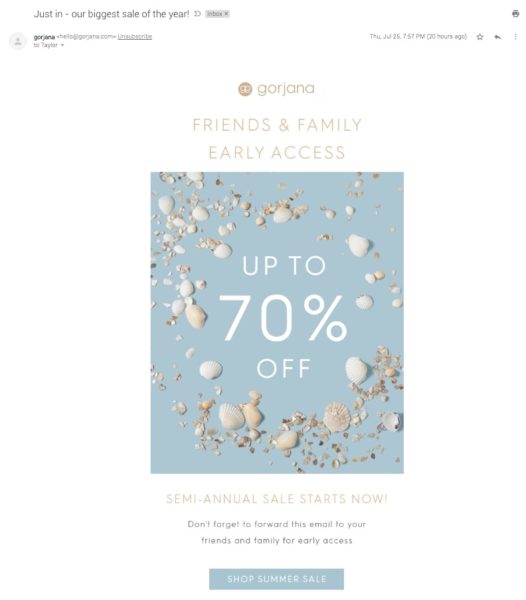
7. Make unsubscribing easy
If someone does not want to hear from you anymore, make it simple for them to unsubscribe! It’s better to have a smaller list of truly engaged contacts than a massive list of people who ignore you. Make that “unsubscribe” button easy to see on the email and allow them to opt out with one click, rather than asking them to fill out a survey or enter a username and password. That’s lame! If you’re making it hard to unsubscribe, STOP IT!
8. Write like a real human
If you own a company or are a marketer for one, consider attaching a face and name to your emails, it makes it much more personal. Signing emails with a name of a public face, such as the founder or CEO is a great idea. This is proven to help with engagement! If your brand is very large, you could also appoint a human to speak on behalf of your company whose role is to connect and engage with customers. Here’s an example of how one of our clients, Groove Life, signs off their emails with a photo of the CEO Peter Goodwin.
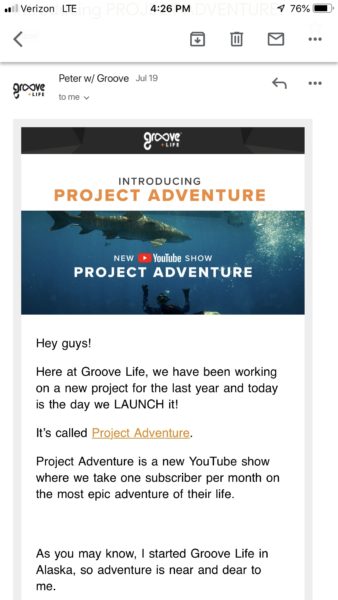
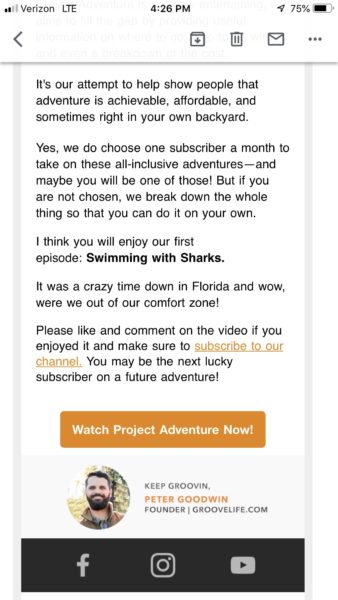
Never Stop Growing
If you’re looking for more tips on optimizing your ecommerce email engine to generate more revenue, we’re here to help! Check out these additional resources below, or click to get in contact with us.
- Ecommerce Email Marketing: How to Sell through Content
- 7 Ecommerce Email Marketing Examples to Inspire Your Campaigns
- 8 Automated Email Campaigns Your Ecommerce Store Needs
- The Best Shopify Abandoned Cart Emails
- Emojis in Subject Lines: Useful or Not?
- The Complete Klaviyo Review for Ecommerce Email Marketing
- 8 Reasons Klaviyo is a No-Brainer for Ecommerce Companies
